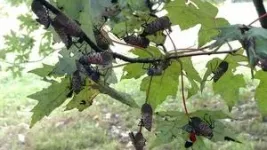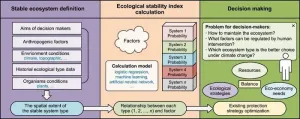(Press-News.org) Increased withdrawals of groundwater resources are accelerating groundwater depletion rates in India, a groundwater depletion hotspot, a new study finds. The study, published today in the journal Science Advances, is led by University of Oklahoma Department of Geography and Environmental Sustainability assistant professor Nishan Bhattarai.
Bhattarai and his collaborators found that under a business-as-usual scenario of groundwater use for irrigation, warming may triple the groundwater depletion rates. Approximately 60% of India’s irrigated agriculture depends on the threatened groundwater. The results of the study indicate that adaptation to an increasingly warm climate threatens the security of India’s future food and water.
“Without policies and interventions to conserve groundwater, we find that warming temperatures will likely amplify India’s already existing groundwater depletion problem, further challenging India’s food and water security in the face of climate change,” Bhattarai said.
The study uses an empirical model linking groundwater depletion, crop water stress and India’s climate. After modeling these relationships across the country, the authors also assessed whether the relationships between these variables differed for India’s two major aquifer systems, unconsolidated and consolidated aquifers.
Additionally, the study suggests that climate change may increase the areas of the country where groundwater depletion occurs. Currently, the most overexploited aquifers are in the northwest and south of India, but the study indicates that by 2050 that area may extend to the southwest, the southern peninsula and central India.
The study used a unique dataset combining groundwater depth data from thousands of wells across India, a high-resolution remote-sensing data product measuring crop water stress, and temperature and precipitation data.
Prior studies focused specifically on the effects of climate change and groundwater depletion on crop production rather than the feedback mechanisms between these variables. Those studies also did not account for farmer decision-making. Bhattarai’s study considers that farmers may increase irrigation to adapt to increased crop water demand, but groundwater depletion could reduce irrigation abilities over decadal time scales.
Increased water demand means that the warming temperatures increase crop water stress in both the monsoon and winter growing seasons. And, while monsoons provide ample water for crops through precipitation and surface water availability, for consolidated aquifer systems, groundwater depletion is driven by a decrease in monsoon recharge. For unconsolidated aquifer systems, the declines are caused by increased groundwater withdrawal during the winter season.
The study calls for an end to the overexploitation of groundwater withdrawal, citing a need for policies for rationing the power supply and metering electricity usage that has historically allowed farmers to withdraw groundwater on demand. Additional measures include regional water source development and allocation, rewarding those farmers who invest in groundwater recharge, and the reduction or removal of energy subsidies.
The study’s coauthors include David B. Lobell of Stanford University, Balwinder-Singh of the International Maize and Wheat Improvement Center in India and the Department of Primary Industries and Regional Development in Western Australia, Ram Fishman of Tel Aviv University, William Kustas of the U.S. Department of Agriculture, Yadu Pokhrel of Michigan State University, and Meha Jain of the University of Michigan.
For more information about the Department of Geography and Environmental Sustainability in the College of Atmospheric and Geographic Sciences, visit ou.edu/ags/geography.
###
About the Project
The study, “Warming temperatures exacerbate groundwater depletion rates in India,” published Sept. 1, 2023, in Science Advances, DOI 10.1126/sciadv.adi1401
About the University of Oklahoma
Founded in 1890, the University of Oklahoma is a public research university located in Norman, Oklahoma. OU serves the educational, cultural, economic and health care needs of the state, region and nation. For more information visit www.ou.edu.
END
EMBARGOED FOR RELEASE AT 2 P.M. ET FRIDAY, SEPT. 1, 2023
Photos
ANN ARBOR—A new University of Michigan-led study finds that farmers in India have adapted to warming temperatures by intensifying the withdrawal of groundwater used for irrigation. If the trend continues, the rate of groundwater loss could triple by 2080, further threatening India's food and water security.
Reduced water availability in India due to groundwater depletion and climate change could threaten the livelihoods of more than one-third of the country's 1.4 billion ...
SAN ANTONIO (Sept. 1, 2023) — What initiates chemical intolerance (CI)? In a newly released survey of thousands of U.S. adults, respondents most frequently cited exposures to biological sources, such as mold and algae “blooms,” and/or fossil fuels, their combustion products and synthetic chemical derivatives such as pesticides, plastics and persistent organic pollutants.
It's an issue in the news, as toxic mold spawned by the moisture left behind by flood waters from Hurricane ...
East Hanover, NJ – September 1, 2023 – Labor Day weekend brings more good news for people with disabilities, with record-breaking highs for labor force participation and employment-to-population ratio, according to today’s National Trends in Disability Employment – semi-monthly update (nTIDE), issued by Kessler Foundation and the University of New Hampshire’s Institute on Disability (UNH-IOD). In comparison, both indicators declined slightly for people without disabilities.
Month-to-Month nTIDE Numbers (comparing July 2023 to August 2023)
Based on data from the U.S. Bureau of Labor Statistics (BLS) Jobs Report released ...
New Haven, Conn. — Health benefits that have resulted from reductions in fine particulate air pollution aren’t distributed equally among populations in the U.S., a new Yale-led study finds. Racial and ethnic minorities — and Black people in particular — still experience disproportionately high rates of cardiovascular disease-related deaths caused by exposure to fine particulate matter, according to the research.
The findings were published Aug. 31 in Nature Human Behavior.
Fine particulate matter, also known as PM2.5, consists of particles or droplets smaller than 2.5 micrometers in diameter, or ...
People without a secure job contract can reduce their risk of premature death by 20 per cent if they gain permanent employment, a study from Karolinska Institutet published in The Journal of Epidemiology and Community reports. According to the researchers, the results indicate that job security on the Swedish labour market needs to improve.
Precarious employment is a term that is used to describe jobs with short contracts (e.g. temping), low wages and a lack of influence and rights, all of which lead to a working life without predictability and security.
In the present study, the researchers have examined how this affects the risk of death.
“This is ...
University of Alaska Fairbanks scientists will make several trips to Greenland over two years to study how meltwater and the ocean affect glacial ice loss.
The four-year research project, funded by a $565,000 National Science Foundation grant, will create a traveling museum exhibit about the drivers of Arctic climate change. The exhibit will appear first at the University of Alaska Museum of the North, likely in 2026.
Ice loss from the polar ice sheets is the largest anticipated contributor to global mean-sea-level rise in the coming century. Scientists need to better understand glacier behavior to improve predictions of sea-level rise.
At the study’s conclusion, ...
When the COVID-19 pandemic swept into New Mexico in the spring of 2020, seriously ill patients from all over the state were brought to The University of New Mexico Hospital in Albuquerque, where many wound up in intensive care, breathing with the help of ventilators.
Early on, researchers from the UNM Center for Global Health launched a study of hospitalized patients to gauge the severity of symptoms from the infection, gathering data on 475 patients from April 2020 through December 2021.
In paper published this week in PNAS Nexus, ...
New research by an international team of scientists explains what’s behind a stalled trend in Arctic Ocean sea ice loss since 2007. The findings indicate that stronger declines in sea ice will occur when an atmospheric feature known as the Arctic dipole reverses itself in its recurring cycle.
The many environmental responses to the Arctic dipole are described in a paper published online today in the journal Science. This analysis helps explain how North Atlantic water influences Arctic Ocean climate. Scientists call it Atlantification.
The research is led by professor Igor Polyakov of the University of Alaska Fairbanks College of ...
In a groundbreaking study published in Volume 17 of the journal Environmental Science and Ecotechnology, researchers from the Chinese Academy of Sciences introduced a landscape-oriented framework to assess ecological stability in China's Qingzang Plateau (QP). The QP demonstrated a medium-high stability level with minimal changes in recent years. Ecological stability involves understanding changes in ecosystem components over time, with two major concepts explored: systems close to equilibrium and non-equilibrium behavior. Despite lacking a consensus on the definition of "ecological stability", stability indices ...
New research from Lancaster University Management School (LUMS) unveils the extent of sustained exploitation within many Chinese families that have a clear preference for sons over daughters – and why daughters can stay ‘trapped’ in this situation throughout their lives.
The new study explores Chinese families that have a strong preference for sons, where daughters are expected to make substantial financial or labour contributions to their parents before and after marriage– often to subsidise the schooling and living ...






